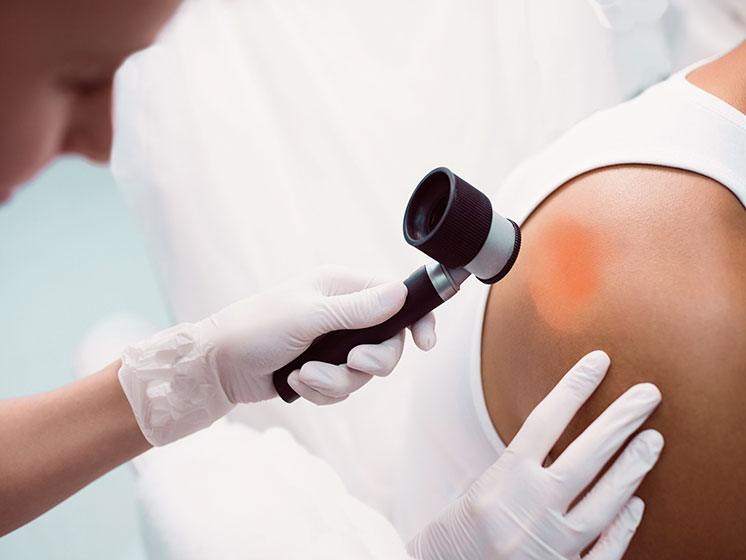Consult with a professional skin cancer with routine screenings.
Consult with a professional skin cancer with routine screenings.
Blog Article
Browsing Skin Cancer Therapy: The Important Duty of Mohs in Modern Dermatology Practices
Skin cancer cells, a complicated medical diagnosis, commonly leaves clients grappling with numerous treatment options. As we check out the complexities of this treatment, one will certainly appreciate its pivotal function in skin cancer cells therapy.
Understanding Skin Cancer: Types and Risks
There are 3 major kinds of skin cancer cells: Basic cell carcinoma, Squamous cell carcinoma, and Melanoma. It accounts for only about 1% of skin cancer cases yet causes the substantial majority of skin cancer fatalities. Danger elements include fair skin, history of sunburn, too much sun direct exposure, living at high elevations or close to the equator, having several moles, a household history of skin cancer, and deteriorated immune system.
What Is Mohs Surgery and Just How It's Revolutionizing Skin Cancer Cells Treatment
Regardless of the many therapies currently available for skin cancer, Mohs surgical procedure stands out as a groundbreaking and highly efficient option. Named after Frederic E. Mohs, the physician that established the procedure, Mohs surgical procedure is an accurate medical method made use of to treat skin cancer cells. This level of precision, incorporated with the capacity to spare as much healthy tissue as possible, is changing skin cancer cells treatment.
The Advantages of Mohs Surgery Over Standard Skin Cancer Cells Therapies
Building on the innovative nature of Mohs surgical treatment, it's crucial to consider its numerous advantages over typical skin cancer treatments. Unlike typical treatments, Mohs provides a greater remedy price, typically getting to 99% for first-time treatments and 94% for recurrent cancers. This precision is due to its distinct method of progressively eliminating and examining cells layers up until only cancer-free cells remain (skin cancer). Additionally, it reduces damages to healthy and balanced skin, causing much less scarring and improved cosmetic outcomes. Mohs likewise gives instant results, getting rid of the anxiety-ridden wait usual with various other methods. It's affordable, as the surgical treatment and microscopic examination happen concurrently, eliminating the need for extra research laboratory solutions. Thus, Mohs represents a considerable advancement in dermatological practices.
The Procedure of Mohs Surgical Treatment: What to Anticipate Throughout the Process

Potential Adverse Effects and Post-Operative Treatment of Mohs Surgery
Going through Mohs surgical treatment, like any kind of various other surgical procedure, entails prospective adverse effects that patients should know. Typical side effects include pain, bruising, and swelling at the surgery website. These are usually short-term and manageable with non-prescription discomfort medicine and ice packs. In uncommon instances, patients may experience infection, blood loss, or an allergy to the anesthetic. Post-operative treatment is vital to recovery and minimizing side results. This commonly includes maintaining the injury tidy and completely dry, taking prescribed medications, and preventing laborious activities. Clients ought to also attend all follow-up consultations for injury care and monitoring. In some situations, extra treatments may be needed to guarantee full elimination of the cancerous cells. Abiding by these post-operative treatment guidelines can considerably improve recovery and outcomes.
Conclusion

Report this page